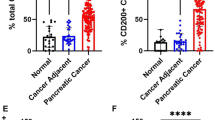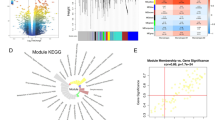Abstract
Background and objective: Matrix metalloproteinases (MMPs) play an important role in several steps of cancer development. MMP2 and MMP9 have previously been implicated in lymphatic and vascular invasion of lung cancer; however, the expression and prognostic significance of MMP2 and MMP9 is not fully clarified. This study was designed to investigate the significance of MMP2 and MMP9 in lung cancer tissue or serum, and their correlation with lung cancer prognosis.
Methods: Immunohistochemical analysis was performed to determine MMP2 and MMP9 staining in human nonsmall cell lung cancer (NSCLC). Serum MMP2 and MMP9 protein levels in patients after surgery were measured using the ELISA method. The correlation between MMP2 and MMP9 serum levels and clinicopathological features of NSCLC were analyzed by survival analysis. We also performed reverse transcriptase (RT)-PCR assays to detect messenger RNA (mRNA) expression to further confirm the activity of MMP2 and MMP9 in human lung cancer.
Results: Increased MMP2 immunostaining and MMP2 serum level correlated with advanced tumor stage and the presence of distant metastasis (Pearson’s χ2 test and ANOVA, p < 0.05). However, for MMP9, only serum level showed a correlation with advanced tumor stage. No significant correlation was observed between MMP2 or MMP9 immunostaining expression and tumor histologic features (Pearson’s χ2 test, p = 0.061 and p = 0.087, respectively). A high densitometry value of MMP2 and MMP9 PCR products (i.e. mRNA expression level) was related to poor differentiation grade, distant metastasis, and small cell carcinoma histologic type (ANOVA, p < 0.05).
Conclusions: Our results suggest that MMP2 is a more sensitive predictor than MMP9 of lung cancer progression, metastasis, and survival. Serum MMP2 levels may be a valuable prognosis variable and could help to stratify lung cancer patients into low- and high-risk groups.






Similar content being viewed by others
References
Vihinen P, Kahari VM. Matrix metalloproteinases in cancer: prognostic markers and therapeutic targets. Int J Cancer 2002; 99: 157–66
Bergman B, Brezicka FT, Engstrom CP, et al. Clinical usefulness of serum assays of neuron-specific enolase, carcinoembryonic antigen and CA-50 antigen in the diagnosis of lung cancer. Eur J Cancer 1993; 29A(2): 198–202
Niho S, Nishiwaki Y, Goto K, et al. Significance of serum pro-gastrin-releasing peptide as a predictor of relapse of small cell lung cancer: comparative evaluation with neuron-specific enolase and carcinoembryonic antigen. Lung Cancer 2000; 27(3): 159–67
Schneider J, Philipp M, Velcovsky HG, et al. Pro-gastrin-releasing peptide (ProGRP), neuron specific enolase (NSE), carcinoembryonic antigen (CEA) and cytokeratin 19-fragments (CYFRA 21-1) in patients with lung cancer in comparison to other lung diseases. Anticancer Res 2003; 23(2A): 885–93
Nilsson O, Johansson C, Glimelius B, et al. Sensitivity and specificity of CA242 in gastro-intestinal cancer: a comparison with CEA, CA50 and CA 19-9. Br J Cancer 1992; 65(2): 215–21
Birim O, Kappetein AP, Takkenberg JJ, et al. Survival after pathological stage IA nonsmall cell lung cancer: tumor size matters. Ann Thorac Surg 2005; 79: 1137–41
Brinckerhoff CE, Rutter JL, Benbow U. Interstitial collagenases as markers of tumor progression. Clin Cancer Res 2000; 6: 4823–30
Westermarck J, Kahari VM. Regulation of matrix metalloproteinase expression in tumor invasion. FASEB J 1999; 13: 781–92
Tsunezuka Y, Kinoh H, Takino T, et al. Expression of membrane-type matrix metalloproteinase 1 (MT1-MMP) in tumor cells enhances pulmonary metastasis in an experimental metastasis assay. Cancer Res 1996; 56: 5678–83
Cai M, Onoda K, Takao M, et al. Degradation of tenascin-C and activity of matrix metalloproteinase-2 are associated with tumor recurrence in early stage non-small cell lung cancer. Clin Cancer Res 2002; 8: 1152–6
Zinzindohoue F, Lecomte T, Ferraz JM, et al. Prognostic significance of MMP-1 and MMP-3 functional promoter polymorphisms in colorectal cancer. Clin Cancer Res 2005; 11: 594–9
Fang S, Jin X, Wang R, et al. Polymorphisms in the MMP1 and MMP3 promoter and non-small cell lung carcinoma in North China. Carcinogenesis 2005; 26: 481–6
Yu C, Zhou Y, Miao X, et al. Functional haplotypes in the promoter of matrix metalloproteinase-2 predict risk of the occurrence and metastasis of esophageal cancer. Cancer Res 2004; 64: 7622–8
Kanamori Y, Matsushima M, Minaguchi T, et al. Correlation between expression of the matrix metalloproteinase-1 gene in ovarian cancers and an insertion/ deletion polymorphism in its promoter region. Cancer Res 1999; 59: 4225–7
Leppa S, Saarto T, Vehmanen L, et al. A high serum matrix metalloproteinase-2 level is associated with an adverse prognosis in node-positive breast carcinoma. Clin Cancer Res 2004; 10(3): 1057–63
Sheen-Chen SM, Chen HS, Eng HL, et al. Serum levels of matrix metalloproteinase 2 in patients with breast cancer. Cancer Lett 2001; 173(1): 79–82
Moser PL, Hefler L, Tempfer C, et al. Immunohistochemical detection of matrix metalloproteinases (MMP) 1 and 2, and tissue inhibitor of metalloproteinase 2 (TIMP 2) in stage I and II endometrial cancer. Anticancer Res 1999; 19(3B): 2365–7
Sier CF, Casetta G, Verheijen JH, et al. Enhanced urinary gelatinase activities (matrix metalloproteinases 2 and 9) are associated with early-stage bladder carcinoma: a comparison with clinically used tumor markers. Clin Cancer Res 2000; 6(6): 2333–40
Ueno H, Nakamura H, Inoue M, et al. Expression and tissue localization of membrane-types 1, 2, and 3 matrix metalloproteinases in human invasive breast carcinomas. Cancer Res 1997; 57: 2055–60
Hanke B, Wein A, Martus P, et al. Serum markers of matrix turnover as predictors for the evolution of colorectal cancer metastasis under chemotherapy. Br J Cancer 2003; 88: 1248–50
Sobin LH, Wittekind C. TNM classification of malignant tumors. 5th ed. New York: Wiley-Leiss, 1997
Ross JS, Kallakury BV, Sheehan CE, et al. Expression of nuclear factor-kappa B and I kappa B alpha proteins in prostatic adenocarcinomas: correlation of nuclear factor-kappa B immunoreactivity with disease recurrence. Clin Cancer Res 2004; 10: 2466–72
Stamenkovic I. Extracellular matrix remodelling: the role of matrix metalloproteinases. J Pathol 2003; 200(4): 448–64
Passlick B, Sienel W, Seen-Hibler R, et al. Overexpression of matrix metalloproteinase 2 predicts unfavorable outcome in early-stage non-small cell lung cancer. Clin Cancer Res 2000; 6: 3944–8
Gonzalez-Avila G, Iturria C, Vadillo F, et al. 72-kD (MMP2) and 92-kD (MMP9) type IV collagenase production and activity in different histologic types of lung cancer cells. Pathobiology 1998; 66: 5–16
Luca M, Huang S, Gershenwald JE, et al. Expression of interleukin-8 by human melanoma cells up-regulates MMP2 activity and increases tumor growth and metastasis. Am J Pathol 1997; 151: 1105–13
Brown PD, Bloxidge RE, Stuart NS, et al. Association between expression of activated 72-kilodalton gelatinase and tumor spread in non-small-cell lung carcinoma. J Natl Cancer Inst 1993; 85(7): 574–8
Ishikawa S, Takenaka K, Yanagihara K, et al. Matrix metalloproteinase-2 status in stromal fibroblasts, not in tumor cells, is a significant prognostic factor in non-small-cell lung cancer. Clin Cancer Res 2004; 10(19): 6579–85
Liao J, Wolfman JC, Wolfman A. K-ras regulates the steady-state expression of matrix metalloproteinase 2 in fibroblasts. J Biol Chem 2003; 278(34): 31871–8
Pinto CA, Carvalho PE, Antonangelo L, et al. Morphometric evaluation of tumor matrix metalloproteinase 9 predicts survival after surgical resection of adenocarcinoma of the lung. Clin Cancer Res 2003; 9(8): 3098–104
Iizasa T, Fujisawa T, Suzuki M, et al. Elevated levels of circulating plasma matrix metalloproteinase 9 in nonsmall cell lung cancer patients. Clin Cancer Res 1999; 5: 149–53
Ylisirnio S, Hoyhtya M, Turpeenniemi-Hujanen T. Serum matrix metalloproteinases -2, -9 and tissue inhibitors of metalloproteinases -1, -2 in lung cancer: TIMP-1 as a prognostic marker. Anticancer Res 2000; 20: 1311–6
Price SJ, Greaves DR, Watkins H. Identification of novel, functional genetic variants in the human matrix metalloproteinase-2 gene: role of Sp1 in allele-specific transcriptional regulation. J Biol Chem 2001; 276: 7549–58
Wurtz SO, Christensen IJ, Schrohl AS, et al. Measurement of the uncomplexed fraction of tissue inhibitor of metalloproteinases-1 in the prognostic evaluation of primary breast cancer patients. Mol Cell Proteomics 2005; 4: 483–91
Lehti K, Valtanen H, Wickstrom SA, et al. Regulation of membrane-type-1 matrix metalloproteinase activity by its cytoplasmic domain [published erratum appears in J Biol Chem 2004; 279 (38): 40246]. J Biol Chem 2000 May 19; 275(20): 15006–13
Shou Y, Hirano T, Gong Y, et al. Influence of angiogenetic factors and matrix metalloproteinases upon tumour progression in non-small-cell lung cancer. Br J Cancer 2001; 85: 1706–12
Farias E, Ranuncolo S, Cresta C, et al. Plasma metalloproteinase activity is enhanced in the euglobulin fraction of breast and lung cancer patients. Int J Cancer 2000; 89: 389–94
Chen JJ, Peck K, Hong TM, et al. Global analysis of gene expression in invasion by a lung cancer model. Cancer Res 2001; 61: 5223–30
Su JM, Wei YQ, Tian L, et al. Active immunogene therapy of cancer with vaccine on the basis of chicken homologous matrix metalloproteinase-2. Cancer Res 2003; 63: 600–7
Shan B, Zhuo Y, Chin D, et al. Cyclin-dependent kinase 9 is required for tumor necrosis factor-alpha-stimulated matrix metalloproteinase-9 expression in human lung adenocarcinoma cells. J Biol Chem 2005; 280: 1103–11
Acknowledgments
This work was supported by the National Scientific Foundation of China (grant no. 30030781). Chun-Bao Guo and Dian-Liang Zhang contributed equally to this work. The authors would like to thank Dr Zong-Wei Gao for providing technical assistance and insightful discussions during the preparation of the manuscript. The authors have no conflicts of interest that are directly relevant to the content of this study.
Author information
Authors and Affiliations
Corresponding author
Rights and permissions
About this article
Cite this article
Guo, CB., Wang, S., Deng, C. et al. Relationship between Matrix Metalloproteinase 2 and Lung Cancer Progression. Mol Diag Ther 11, 183–192 (2007). https://doi.org/10.1007/BF03256240
Published:
Issue Date:
DOI: https://doi.org/10.1007/BF03256240




